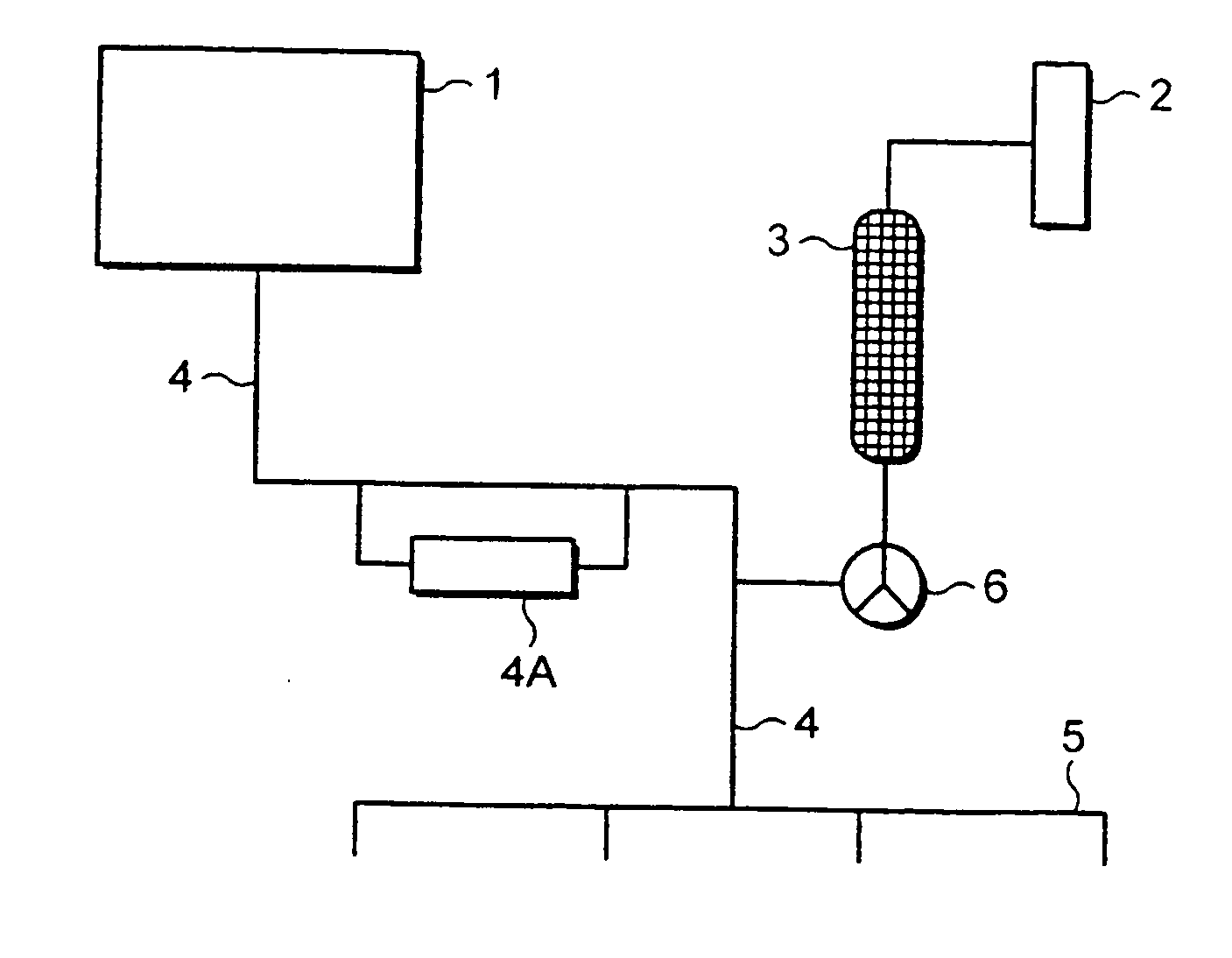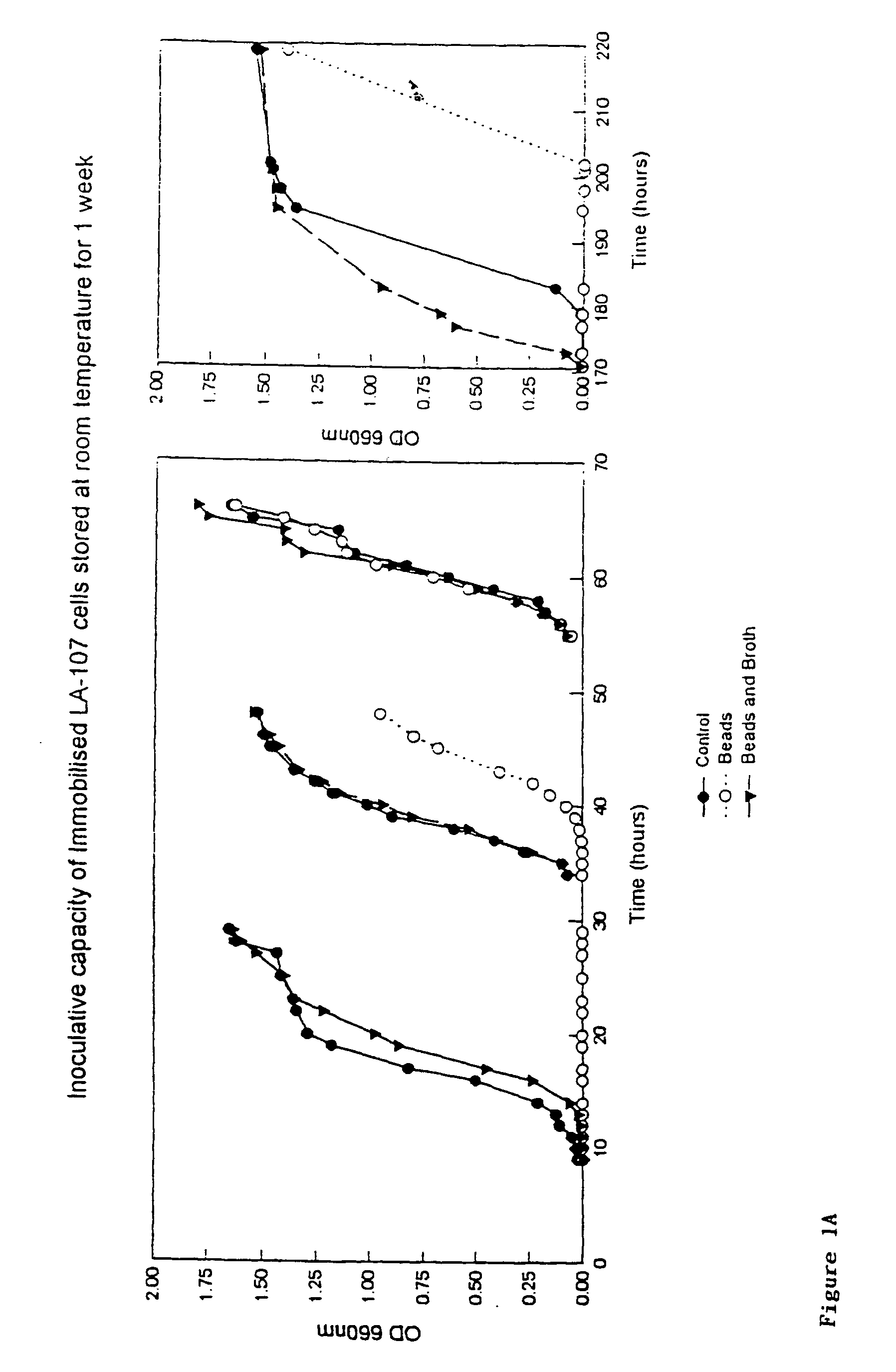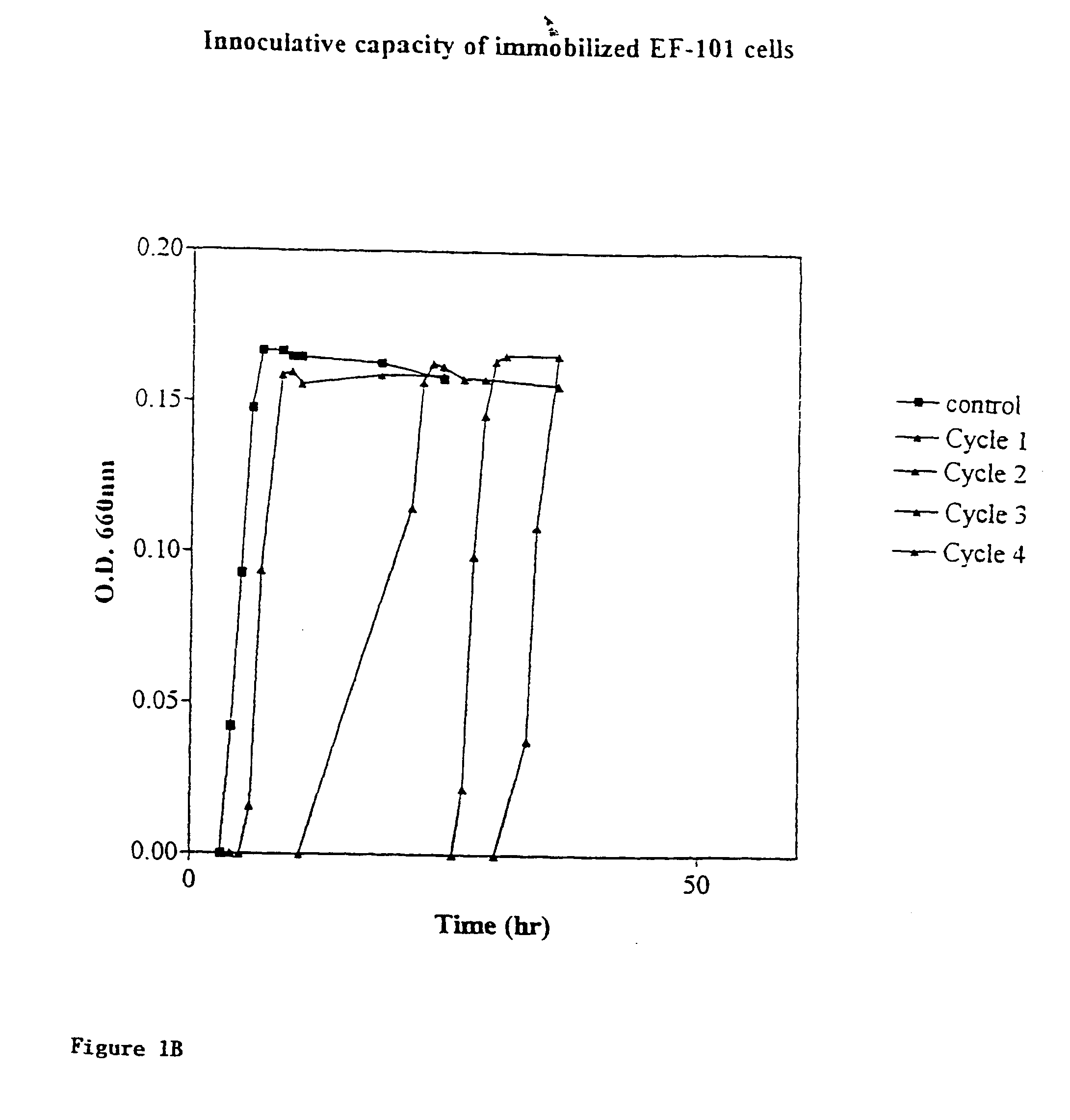Storage and delivery of micro-organisms
a technology for microorganisms and food, applied in the field of microorganisms storage and delivery, can solve the problems of inability to ensure that the correct amount of probiotics has been added each time or not, and the probiotics will not be evenly distributed throughout the feed-stuff or drinking water, so as to increase the ability of a microorganism
- Summary
- Abstract
- Description
- Claims
- Application Information
AI Technical Summary
Benefits of technology
Problems solved by technology
Method used
Image
Examples
example 1
Immobilisation of Probiotic Strains and Use as a Continuous Source of Viable Probiotic
[0078] The objective of this example is to demonstrate (1) that the microbial probiotic strains chosen can be immobilised without detrimental effects to viability and (2) that these formulations may be used as a continuous source of viable probiotic as a result of shedding from the immobilisation matrix.
[0079] 100 ml cultures of Lactobacillus acidophilus LA-107 (ATCC strain no. 53545) and Enterococcus faecium EF-101 (ATCC 19434) are grown to stationary phase in MRS (deMan, Rogosa, Sharpe) broth and nutrient broth (Oxoid), respectively at 37° C. Stationary phase is reached within 8 hours using EF-101 whereas the LA strain reaches stationary phase within 26 h. Cells are washed in medium, recovered by centrifugation and suspended in 4 ml (LA-07) and 2 ml (EF-101) of 4% (w / v) sodium alginate. These suspensions are added drop-wise into 100 ml of 50 mM CaCl2.
[0080] The resulting beads of the immobilis...
example 2
Results
[0086] When beads are prepared in the above alternative manner, they are placed in fresh MIRS medium and the ability of the bead to shed microorganism is determined by measuring the absorbance at 660 nm. In order to further demonstrate that shedding of microorganism can be carried out for a number of cycles, fresh medium is added at 37, 54 and 122 hours. The results obtained are shown in FIG. 2 and they demonstrate that these formulations, prepared in the alternative manner above, may be employed to continuously yield probiotic microorganism.
Example 3
Immobilisation of Probiotic Strains on the Surface of a Material (Kelp)
[0087] The above Examples show immobilisation of microorganism within a matrix. This Example demonstrates that probiotic micro-organisms may be immunobilised by attachment to a solid or semi-solid material (substrate). Thus, as well as being immobilised within a matrix, the micro-organism may be immobilised on a material, which may itself be a matrix.
[0088...
example 3
Results
[0090] The results obtained are shown in FIG. 3 and they demonstrate that the formulation, based on immobilisation of the probiotic microorgansim onto a matrix is also capable of serving as a continuous source of probiotic. As in the case with the results shown in FIG. 7A (see Example 10 below), output of microorganism from the column is erratic and this may be circumvented by agitation of the bed as described for Example 10. Nevertheless these results demonstrate that an alternative matrix may be employed in a column configuration for continuous inoculation of either animal drinking water or feed streams in order to facilitate inoculation of the digestive tract of recipient animals.
PUM
| Property | Measurement | Unit |
|---|---|---|
| diameter | aaaaa | aaaaa |
| diameter | aaaaa | aaaaa |
| temperature | aaaaa | aaaaa |
Abstract
Description
Claims
Application Information
 Login to View More
Login to View More - R&D
- Intellectual Property
- Life Sciences
- Materials
- Tech Scout
- Unparalleled Data Quality
- Higher Quality Content
- 60% Fewer Hallucinations
Browse by: Latest US Patents, China's latest patents, Technical Efficacy Thesaurus, Application Domain, Technology Topic, Popular Technical Reports.
© 2025 PatSnap. All rights reserved.Legal|Privacy policy|Modern Slavery Act Transparency Statement|Sitemap|About US| Contact US: help@patsnap.com



